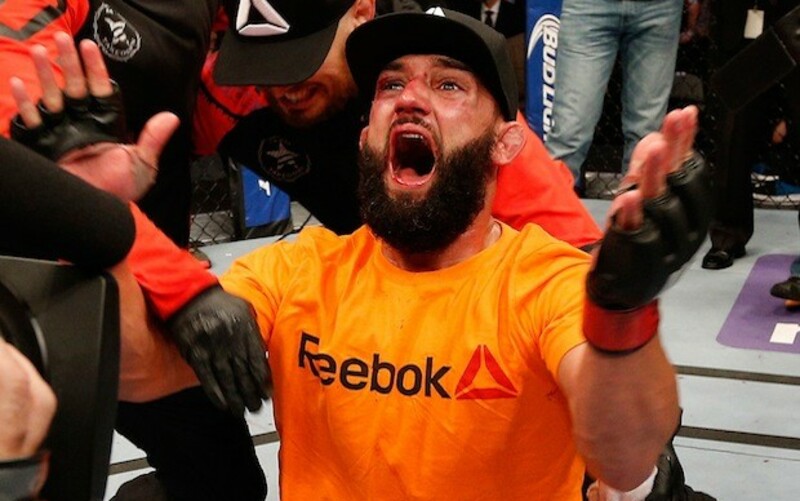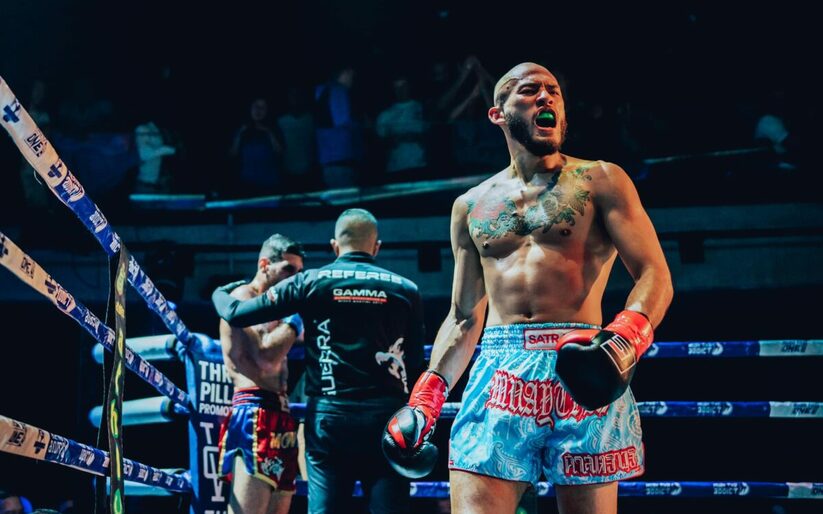The UFC-Reebok deal goes into effect in 38 days. UFC fighters, in an unprecedented collective showing, have not been shy in voicing their disapproval. (Which is not to say that everyone is unhappy.) The UFC has 38 days to make it right or not, though judging by the UFC’s public comments, it’s unlikely any significant changes are made to the pay out structure itself.
Most of the criticism – from fighters and media – has centered on the immediate effects of the deal: lost dollars, the inequity for newcomers, etc. While these are rightful (and the most pressing) complaints, there are a number of long-term issues that have gone undiscussed.
The Time Value of Money
Over the offseason, Max Scherzer signed a 7-year, $210 million dollar contract with the Washington Nationals. The seven years aspect of the contract is a bit of a misnomer. While he’ll spend seven years playing with the Nationals, the team will pay out the deal in $15 million chunks through 2028.
The spread out payment structure lessens the real value of the contract. Dave Cameron of Fangraphs estimates Scherzer’s contract is more in line with a 7-year, $170 million deal. The $40 million difference may not seem like a big deal considering Scherzer will still wind up with nine figures, but it is significant for the Nationals who have budget constraints to deal with.
The UFC-Reebok deal is reportedly worth $70 million over six years, numbers that I have yet to see refuted by either Reebok or the UFC. This is what the deal is worth in real dollars over the next six years, using the same Net Present Value technique as Cameron above (real value rounded to the nearest ten thousand):
Year | Nominal Value | Real Value 2015 | $11,670,000 | $10,910,000 2016 | $11,670,000 | $10,190,000 2017 | $11,670,000 | $9,530,000 2018 | $11,670,000 | $8,900,000 2019 | $11,670,000 | $8,320,000 2020 | $11,670,000 | $7,780,000 Total | $70,020,000 | $55,630,000
This, of course, assumes that the UFC-Reebok deal is paid out in equal parts over the next six years. Perhaps the deal will be backloaded. Here’s an example of how that might look:
Year | Nominal Value | Real Value 2015 | $7,000,000 | $6,540,000 2016 | $8,500,000 | $7,420,000 2017 | $10,000,000 | $8,160,000 2018 | $13,000,000 | $9,920,000 2019 | $15,000,000 | $10,690,000 2020 | $16,500,000 | $10,990,000 Total | $70,000,000 | $53,720,000
The fighters are actually worse off in a backloaded deal, losing an additional $2 million in real value. This makes intuitive sense; the fighters lose the least value if they were given all the money up front in year one.
To further illustrate the point, let’s look at a fictional fighter that we’ll call Joe. Joe makes his debut after the start of the Reebok deal. He stays healthy over the course of his career, alternating between 3 and 2 fights every year. Joe wins more than he loses, but never succeeds in challenging for a UFC title. This is how Joe’s career sponsorship earnings would look like under the current pay scale (real earnings rounded to the nearest hundred):
Year | Fights | Tier | Nominal Earnings | Real Earnings 1 | 3 | $2,500 | $7,500 | $7,000 2 | 2 | $2,500 | $5,000 | $4,400 3 | 3 | $5,000 | $15,000 | $12,200 4 | 2 | $5,000 | $10,000 | $7,600 5 | 3 | $10,000 | $30,000 | $21,300 6 | 2 | $10,000 | $20,000 | $13,300 7 | 3 | $15,000 | $45,000 | $28,000 8 | 2 | $15,000 | $30,000 | $17,500 9 | 3 | $20,000 | $60,000 | $32,600 10 | 2 | $20,000 | $40,000 | $20,300 Total| 25 | X | $262,500 | $164,200
Joe lost nearly $100,000 over the course of the deal just on real value alone. In addition, in a pre-Reebok environment, Joe likely would have negotiated better than $10,000-$20,000/fight in years 5-10 of his career.
A Growing Roster
According to the “List of UFC fighters” Wikipedia page, the UFC currently has 564 fighters under contract. That is up significantly from 2010 when the UFC was promoting five weight classes and 24 fight cards a year.
The roster won’t grow at the same rate it has between 2010 and 2015 for reasons that I hope are obvious to you. But it’s prudent to assume that the UFC will introduce one or more new weight classes over the next six years. Men’s strawweight? Women’s flyweight? Women’s atomweight? Restructuring of the weight classes between 135 and 185 is also not out of the realm of possibility.
That does not necessitate that the overall roster will grow, especially if the UFC’s schedule doesn’t expand significantly over the next six years, but it is a possibility. And a growing roster compounds the issue of the value lost on a long-term deal: the pie shrinks while more hands are trying to get their hands on a piece.
As far as we know, there are no provisions in the UFC-Reebok deal to combat a roster that grows (or shrinks), and there’s no reason to believe that one exists. Would this have been addressed had the fighters been present at the negotiating table? Maybe, maybe not, but it’s unlikely this was ever a concern for the UFC.
The Fighters’ Loss is the UFC’s Gain
The fighters are losing bigtime in this deal. They lose money now in the form of lost sponsorship opportunities and they lose money in the future with the time value of money and a likely increase in the number of hands in the Reebok pie.
The UFC loses next to nothing, though. They negotiated away rights they previously did not have, so they gave up nothing material. They have taken a hit on the fighter relations side, and there’s also the cost of increasing the possibility of fighters organizing, whether that ultimately comes to fruition or not.
But they gain from this deal. They gain from a “cleaner” product on television. They gain the prestige of a partnership with a multinational apparel company, which will aid them in securing similar partnerships.
They also gain from the ability to sell a second spot on the fighters’ shorts to an event sponsor. Yes, the UFC is paying the “vast majority” of the money from the Reebok deal to the fighters (“vast majority” being read with the suspicion that vague, subjective terminology deserves), but the UFC will keep all of the revenue from the event sponsors.
And “event sponsor” is an important term here as it insinuates that the UFC will be utilizing short-term deals, if not event-term deals. As we’ve shown, this allows the UFC to maximize the value of the product they’re selling to advertisers. That comes with risks (the economy collapsing, the UFC’s business taking a nosedive, etc.), and I’m sure there’s a number the UFC would accept for a long-term deal of their own.
Either way, that’s value that comes at effectively no cost to the promotion, assuming labor relations stay at the status quo.
* * *
Fight sport is very much a “what have you done for me lately” business. It’s not surprising that many of the complaints and criticisms of the UFC-Reebok deal have focused on the short-term. Fighters who are already upset with the deal have more than just their immediate losses to be upset with. And fighters who are ambivalent or even supportive of the deal may want to consider the long-term effects of a deal that was signed without their input.



